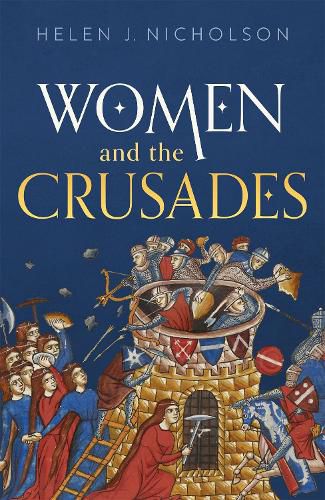Readings Newsletter
Become a Readings Member to make your shopping experience even easier.
Sign in or sign up for free!
You’re not far away from qualifying for FREE standard shipping within Australia
You’ve qualified for FREE standard shipping within Australia
The cart is loading…






The crusade movement needed women: their money, their prayer support, their active participation, and their inspiration…
This book surveys women’s involvement in medieval crusading between the second half of the eleventh century, when Pope Gregory VII first proposed a penitential military expedition to help the Christians of the East, and 1570, when the last crusader state, Cyprus, was captured by the Ottoman Turks. It considers women’s actions not only on crusade battlefields but also in recruiting crusaders, supporting crusades through patronage, propaganda, and prayer, and as both defenders and aggressors. It argues that medieval women were deeply involved in the crusades but the roles that they could play and how their contemporaries recorded their deeds were dictated by social convention and cultural expectations. Although its main focus is the women of Latin Christendom, it also looks at the impact of the crusades and crusaders on the Jews of western Europe and the Muslims of the Middle East, and compares relations between Latin Christians and Muslims with relations between Muslims and other Christian groups.
$9.00 standard shipping within Australia
FREE standard shipping within Australia for orders over $100.00
Express & International shipping calculated at checkout
The crusade movement needed women: their money, their prayer support, their active participation, and their inspiration…
This book surveys women’s involvement in medieval crusading between the second half of the eleventh century, when Pope Gregory VII first proposed a penitential military expedition to help the Christians of the East, and 1570, when the last crusader state, Cyprus, was captured by the Ottoman Turks. It considers women’s actions not only on crusade battlefields but also in recruiting crusaders, supporting crusades through patronage, propaganda, and prayer, and as both defenders and aggressors. It argues that medieval women were deeply involved in the crusades but the roles that they could play and how their contemporaries recorded their deeds were dictated by social convention and cultural expectations. Although its main focus is the women of Latin Christendom, it also looks at the impact of the crusades and crusaders on the Jews of western Europe and the Muslims of the Middle East, and compares relations between Latin Christians and Muslims with relations between Muslims and other Christian groups.